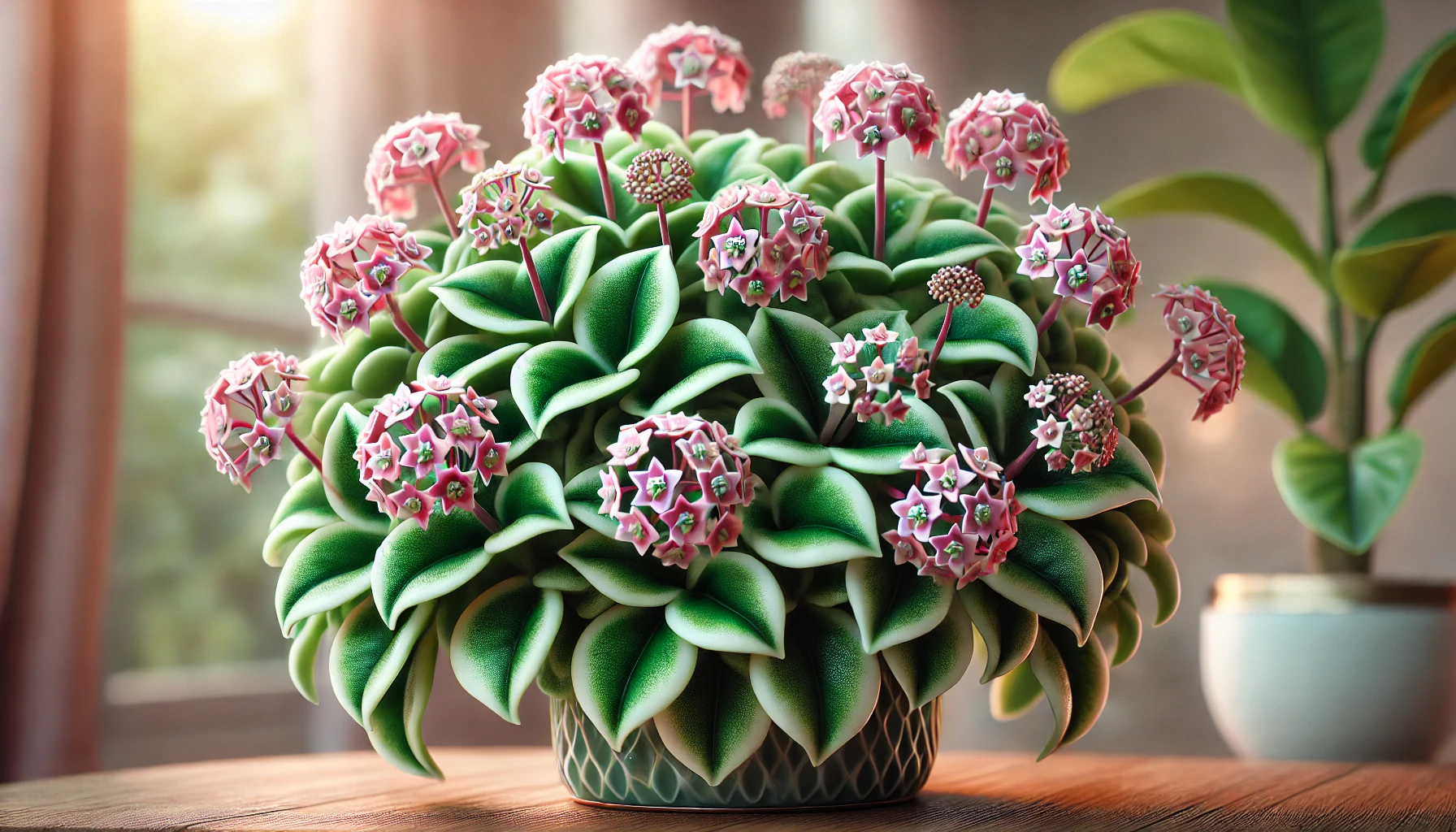
The Hoya plant, also known as wax plant or porcelain flower, is cherished for its waxy, star-shaped flowers and succulent-like leaves. This tropical plant is native to Asia and Australia and belongs to the Apocynaceae family. Hoyas are popular among plant enthusiasts for their unique appearance and ease of care, making them a delightful addition to any indoor garden.
Description and Size
Hoyas vary in size depending on the species and variety. They can range from compact vines suitable for hanging baskets to sprawling plants that can climb or trail several feet. The leaves are typically glossy and fleshy, while the flowers come in clusters and often have a sweet fragrance.
History and Origins
Hoyas have a rich history dating back centuries. They were first discovered and described by European botanists exploring Asia and Australia in the 18th and 19th centuries. Since then, various species and hybrids have been cultivated for their ornamental value.
Ideal Growing Conditions
Hoyas thrive in bright, indirect light but can tolerate lower light conditions. They prefer temperatures between 60°F and 80°F and are sensitive to cold drafts and sudden temperature fluctuations. Hoyas are well-suited to indoor environments and benefit from stable humidity levels.
Toxicity to Animals
Hoyas are generally considered non-toxic to pets such as cats and dogs. However, as with any plant, ingestion may cause mild gastrointestinal upset. It’s still advisable to keep plants out of reach of curious pets.
Best Practices for Caring for Your Hoya
Taking care of a Hoya plant is relatively straightforward, requiring minimal effort for maximum reward.
Watering and Humidity
Hoyas prefer to dry out between watering. Water thoroughly when the top inch of soil feels dry, and ensure that excess water drains out of the pot to prevent root rot. In winter, reduce watering as growth slows down. Hoyas appreciate moderate to high humidity levels; misting the leaves occasionally can help mimic their natural tropical environment.
Soil and Potting
Use a well-draining potting mix designed for succulents or orchids. Hoyas prefer slightly acidic soil with good aeration. Repotting should be done every 1-2 years, preferably in spring, to refresh the soil and provide more room for growth.
Light Requirements
Hoyas thrive in bright, indirect light but can adapt to lower light conditions. Avoid direct sunlight, especially intense afternoon sun, which can scorch the leaves. If your Hoya is not flowering, it may benefit from increased light exposure.
Common Diseases and Issues
Hoyas are generally resilient but can face a few common issues.
- Root Rot: Caused by overwatering or poor drainage. Ensure pots have drainage holes and use well-draining soil.
- Pest Infestations: Aphids, spider mites, and mealybugs can occasionally affect Hoyas. Treat with insecticidal soap or neem oil, and isolate affected plants if necessary.
- Yellowing Leaves: Often due to overwatering or underwatering. Adjust watering practices and ensure the plant’s root zone is healthy.
Remedies and Care Tips
- Pruning: Trim back leggy growth to encourage bushiness.
- Support: Provide a trellis or moss pole for climbing varieties.
- Fertilizing: Feed Hoyas sparingly during the growing season with a balanced fertilizer diluted to half strength.
Overall Ease of Use
Hoyas are considered easy-care plants suitable for both beginners and experienced gardeners. With minimal attention to watering and light conditions, Hoyas can thrive and reward you with their stunning blooms.
Final Thoughts
The Hoya plant is a testament to nature’s beauty and resilience. Its waxy flowers and glossy leaves make it a standout choice for indoor gardening. Whether you’re looking to add a touch of tropical elegance to your living space or expand your collection of houseplants, the Hoya is sure to delight with its unique characteristics and easy-going nature.



